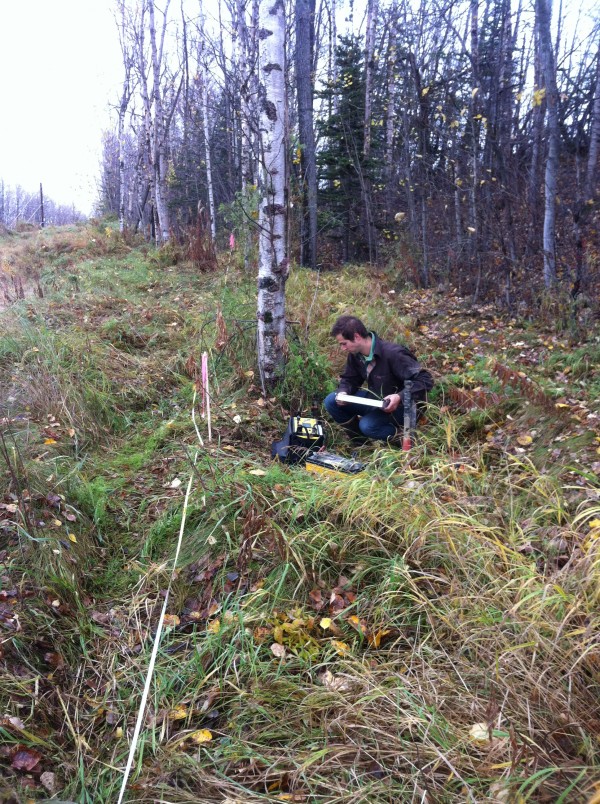Electrical Resistivity
(ER) applies direct
current or low-frequency
alternating current into
the subsurface to determine
the potential difference
between two points
revealing the resistivity and conductivity
of the geological
subsurface units. This exploration
technique is a
quick and inexpensive way to
image the subsurface while leaving the ground surface unscathed. A number
of electrical resistivity
arrays can be
utilized depending on the scope and
goals of the
project and can be
used independently or
in conjunction with
other exploration techniques including borehole drilling.
Uses of ER
exploration include: geologic
mapping of shallow
bedrock and permafrost, volume
estimates of shallow
subsurface leaks and
liquid bodies, locating
mine shafts and voids,
mapping the extent
of aquifers, aquifer
contamination evaluations, and archaeological studies. NGE-TFT has
successfully used ER to gather resistivity data to be used for the design in
grounding systems for
electrical substations and
cell towers. We also
employ the soil box
resistivity test as
a laboratory analysis
of the resistivity
of soil samples
from the field. This
method is mainly
used to determine
the potential for
corrosion of pipes
and other metals buried in the
tested soils. Electrical
Resistivity is limited
to summer use
and should be
employed in soils
that are unsaturated with rain
water. Generally, a brief site assessment should be conducted prior to the
commissioning of an
ER survey to evaluate the
site conditions and
determine if ER
technology may be a
suitable
exploration/inspection method for
a given project.
New and/or unproven applications for Electrical
Resistivity are constantly being discovered and tested, so contact NGE-TFT and
let us work together to determine if ER is a suitable technology for your next
project!


